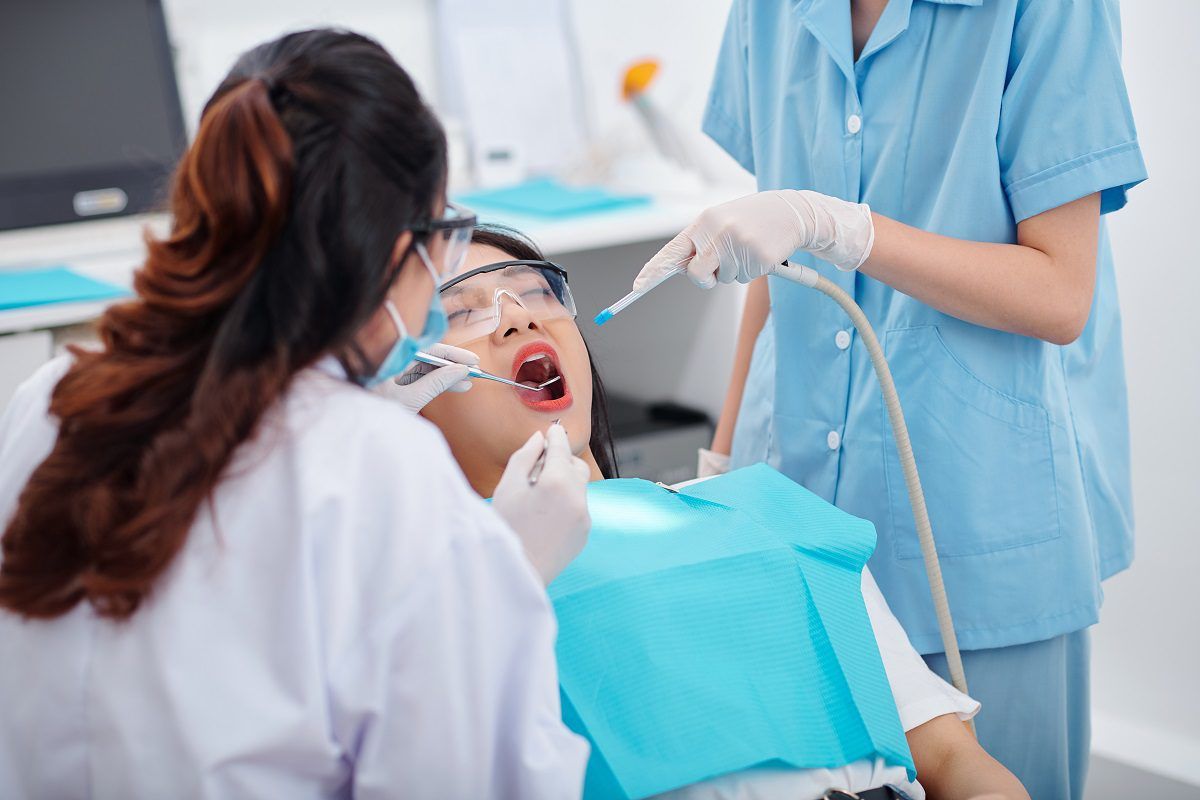

What is the Procedure for Dental Inlay / Onlay?
The Step-by-Step procedure for dental Inlay/Onlay is outlined in detail below:
- Remove the filling:
Dental inlays and onlays are frequently employed to replace decaying or cracked fillings. Your orthodontist will extract any existing fillings before putting the new one. Furthermore, any cavitated tooth tissue is removed, resulting in a "hole" in the tooth. Your dentist will then shape and prepare your tooth so the inlay or onlay can be put more readily.
- Taking a tooth impression
A mold of the affected or cavitated tooth is taken during the initial appointment. You and your dentist can use this mold to determine the sort of inlay or onlay material to use (gold, ceramic, or composite). If ceramic is used, you will be able to choose the repair color during this visit.
- Temporary filler implants:
The third phase in the treatment is temporary filler implantation. During this time, a temporary filling is placed in the cavity to keep it from becoming infected. Keeps your teeth safe from temperature stimulation, leading to decay (sensitivity caused by cold or hot liquids).
- Inlay/ onlay placement:
The fourth step is to place the inlay/onlay. When the restoration is finished, appointments for inlay or onlay work will be booked.
If requested, your dentist will provide a local anesthetic to relieve pain and discomfort throughout thie procedure for dental inlay/onlay . The temporary filling is then removed, and the inlay or onlay is permanently attached to your tooth. Temporary fillings may usually be removed and inlays and onlays installed without giving the patient undue discomfort.
Dental offices can now use CAD/CAM milling equipment like the CEREC to create porcelain and composite inlays and onlays. The exact process is used to create same-day dental crowns. Steps one and two have been completed, and you will skip step three and proceed directly to step four within the same session.
Self-Care Recommendations:
Inlays and onlays only take a few days to heal. On the other hand, your teeth are still susceptible to plaque and oral bacteria growth as they age. Good oral hygiene is essential for the health of dental restorations.
Prevention Advice
Dentists provide the following advice to help prevent dental disease:

- Keeping your mouth clean is an essential element of maintaining proper dental hygiene.
- The inlays extend to the gum line (between your teeth). This is a difficult area to clean, and it necessitates regular interdental cleanings, such as flossing and brushing with an interdental toothbrush. Brushing your teeth twice a day and rinsing with mouthwash is crucial for excellent oral hygiene.
- Diet: Patients should limit their sugar intake after placing an inlay or onlay. Dentists should avoid acidic foods and beverages as well. This group includes candy, coffee, dairy, dark fruits, and processed foods.
- Check-Ups: Have your dentist inspect your inlays and onlays every six months. Dentists will examine the tooth for leaks, damage, and sickness during these appointments.
Contact your Lafayette dentist, Dr. Massood Darvishzadeh, DDS at Lafayette Dental Group today to learn about the procedure of dental Inlays and Onlays.
*Neither this nor any other content in this media is meant to prescribe, recommend, or prevent any treatment or procedure. We highly recommend that you get the advice of a qualified dentist or other medical practitioners regarding your specific dental condition*
Services
Contact Us
3466 Mt Diablo Blvd., Suite C207
Lafayette, CA 94549
2026 © Lafayette Dental Group | All rights reserved | Powered by: Vigorant, Inc.
